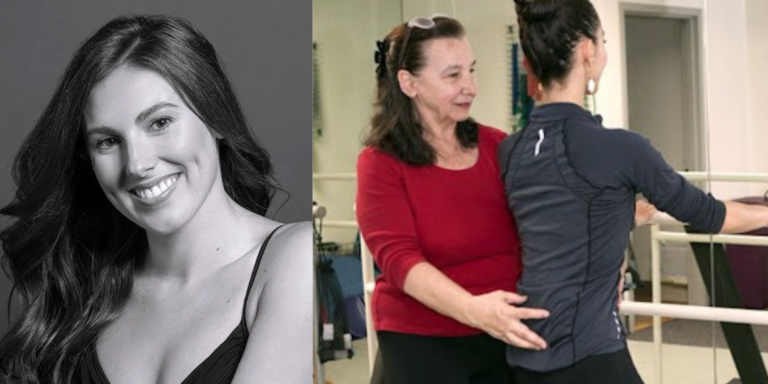Dancers who dare to sing increase their marketability, according to voice teacher Jan Horvath.
It’s one thing to master a triple pirouette, she says. It’s another to be a well-rounded performer who can tackle any challenge without being discouraged.
Horvath teaches voice at Steps Conservatory, a two-year professional dance program in New York City. Once a week, she leads two groups of 10 students in a 90-minute vocal course.
“It’s like a ballet barre,” she explains. “We focus on one little thing of the day and perfect it and move on.”
Horvath, a concert soloist with Carnegie Hall credentials, encourages students to study with private vocal teachers. But group classes allow them to practice audition songs in front of supportive peers.
“There’s a stigma,” says Horvath, whose own pipes earned her leading roles in several Broadway shows, including The Phantom of the Opera. “Many of my students think, ‘Oh, I’m a dancer. I’m not supposed to sing.’ It’s really psychological for them to feel like they deserve to sing. For many, the belief is that’s something someone else does, and that makes me sad. Everyone can sing. The voice is part of the whole person.”
To feel secure, Horvath’s students learn practical audition tips, including how to communicate with pianists when setting a comfortable tempo.
Here are five “notes” every educator should consider when developing a vocal curriculum for dancers:
Talking is singing. When human beings talk to each other, they use various pitches. Horvath’s job is to help dancers elongate sounds to find the various “flavors,” from moaning in a low voice to whining in a higher voice. “I want students to sound and look like themselves,” Horvath says. “I tell them to stay focused on expressing rather than impressing.”
Choose surprising or classic material that show off personality. Rather than cliche hits with inaccessible notes, consider the exhausted casting director who has heard “Let It Go” one hundred times that day and really needs to eat a sandwich. Horvath’s performers sang a range of pieces from “Somewhere That’s Green” from Little Shop Of Horrors to “Issues,” a recent pop tune by Julia Michaels. One seemingly quiet dancer charmed the audience when she belted “Shy” from Once Upon A Mattress.
Dancers learn quickly, but they may be self conscious. Because they spend so much time checking their postures in the mirror, dancers have a strong body awareness. Just like they can perfect a tendu, they can also develop the physical coordinations to make sound. Unlike opera singers, who let their bellies expand freely with breath, dancers can find a balance that helps them hold a note while maintaining some of that “pulled-in” feeling in the abdomen. A non-competitive group setting can convince them that new techniques sound and look good, better than they may feel.
Incorporate voice into a recital. At a recent showcase for Steps Conservatory, Horvath presented Dancers Who Sing (DWS) “support groups” as a witty way to add singing and acting into a dance performance. Between modern and musical theater pieces, students in DWS T-shirts carried chairs on stage and arranged them in a half circle in front of the audience. Horvath sat in the front row, leading them in their positive song affirmation of “God, I’m a dancer. A dancer dances (and sings).” One by one, she asked each dancer to come up and talk about their “problems” and dreams through short snippets of songs that included “Criminal” by Fiona Apple and “Smile” by Charlie Chaplin.
Vocal cords are part of a dancer’s anatomy and sense of self. Whether or not dancers go into musical theater, they can learn how to effectively express themselves, not just at an audition but in life. “Working on your voice builds confidence,” Horvath says. “When you need to say, ‘I would really be good for this job,’ you can do it and let it resonate.”




